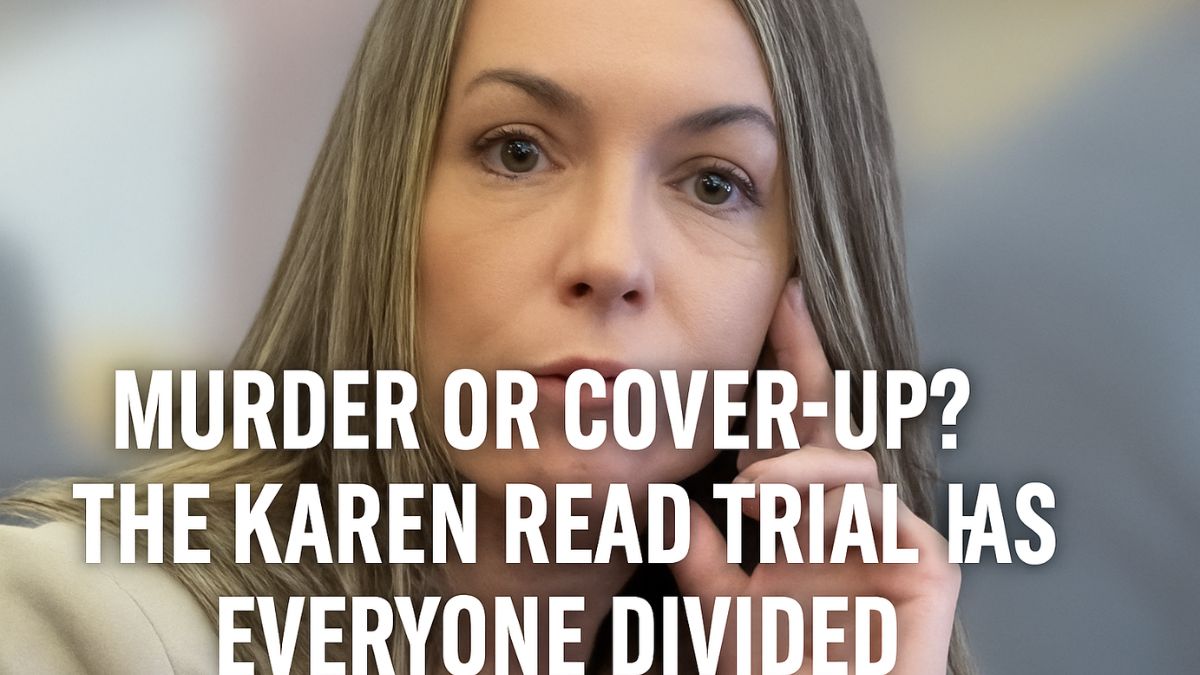New York: A snowy night. A broken heart. And a death that sparked a media frenzy. The Karen Read case isn’t just another courtroom headline—it’s a tangled story of love, power, loyalty, and doubt. What began as the tragic loss of Boston police officer John O’Keefe has now become a high-profile trial that feels more like a psychological thriller than a straightforward legal case.
Karen Read, the officer’s girlfriend, is accused of a crime that has deeply divided the public. Did she strike him with her SUV and leave him to die in a blizzard? Or is she a scapegoat in a larger cover-up involving people in power? With witness contradictions, crash test reenactments, missing phone data, and whispers of a police conspiracy, this case continues to captivate—and confuse.
As the retrial nears its conclusion, millions are glued to updates. Because the deeper you look, the more blurred the lines become between guilt and innocence, justice and agenda. Here’s a breakdown of the facts, the theories, and the unanswered questions.
The Night of the Incident: What We Know
On January 29, 2022, John O’Keefe was found unresponsive in the snow outside a home in Canton, Massachusetts. He had injuries consistent with blunt-force trauma. Karen Read had dropped him off after a night of drinking, according to her own statement, and later told first responders, “I hit him. I hit him. I didn’t see him.”
Prosecutors say this was a confession—that she hit him while making a three-point turn and left him in freezing temperatures. But Read’s defense argues she was distraught and in shock, and that the statement was taken out of context.
The Forensic Battle: Crash vs. Cover-Up
The Commonwealth leaned heavily on vehicle data, crash reconstruction, and taillight fragments found at the scene. Expert testimony claimed the injuries on O’Keefe’s body were consistent with being struck by the rear of Read’s Lexus SUV.
But the defense pushed back. Their own crash expert claimed the injuries didn’t match a vehicle strike and pointed to alternative possibilities: that O’Keefe may have been injured inside the house and placed outside. They even suggested that a dog at the party could be responsible for some wounds.
Also Read: She Broke Every Rule: Why Glennon Doyle’s Life Story Feels Like a Revolution
Suspicion and Missing Evidence
Adding fuel to the defense’s theory: alleged misconduct by lead investigator Michael Proctor. Text messages he sent mocking Read and calling her names were made public, damaging the prosecution’s credibility. Proctor has since been removed from the case.
Additionally, questions swirl around why phone data from certain partygoers went missing, and why some key witnesses changed their statements. The defense has claimed these inconsistencies point to a coordinated effort to protect someone else.
Public Reaction: A Case That Split the Internet
On social media, the Karen Read case has become a phenomenon. TikTok sleuths, Reddit threads, and true crime podcasts are dissecting every frame of courtroom footage. Hashtags like #JusticeForJohn and #FreeKarenRead reveal a deeply polarized public.
Some see Karen Read as a woman pushed to the edge—gaslit, grieving, and unfairly targeted. Others believe she’s a cold and calculated perpetrator. The case has raised uncomfortable questions about how we view women on trial, especially when emotions, love, and tragedy are involved.
What the Jury Must Decide
As the jury now deliberates, they must sift through conflicting expert opinions, emotional testimony, and a digital trail that feels more chaotic than clear. The question isn’t just whether Karen Read killed John O’Keefe. It’s also whether the system has shown the full truth.
Did she act out of rage or confusion? Was she framed to protect insiders? Or is this simply a tragic case with no winners?
Whatever the outcome, one thing is certain: the Karen Read case will be studied, debated, and remembered long after the verdict.







